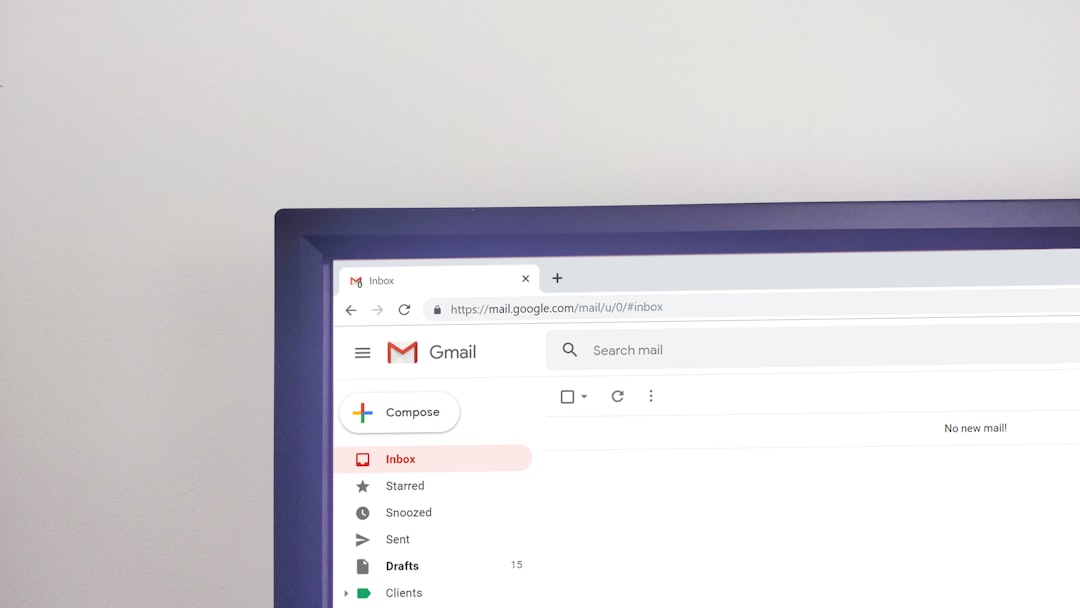Table of Contents
- Introduction
- Understanding Behavioral Triggers in Email Marketing
- Identifying Key Customer Actions for Trigger Implementation
- Setting Up Automation Rules for Trigger-Based Emails
- Crafting Relevant Content for Different Customer Scenarios
- Using Data Analytics to Refine Trigger-Based Strategies
- Incorporating Personalization into Automated Emails
- Testing and Optimizing Trigger-Based Email Campaigns
- Case Studies: Successful Trigger-Based Email Marketing Examples
- Conclusion
- Frequently Asked Questions
Introduction
In the fast-paced digital world, capturing the attention of your audience is more challenging than ever. But what if you could unlock the secret to skyrocketing engagement with just the right timing? The answer lies in mastering behavioral triggers and leveraging the power of automation to send emails at the perfect moment.
| Key Elements | Benefits |
|---|---|
| Behavioral Triggers | Personalized engagement |
| Email Automation | Time-efficient strategies |
| Perfect Timing | Increased open rates |
Email marketers around the globe are tapping into these powerful strategies to craft campaigns that not only reach but truly resonate with their audience. Imagine creating an experience for your subscribers that feels intuitively aligned with their needs and behaviors.
Understanding Behavioral Triggers in Email Marketing
Understanding behavioral triggers in email marketing is crucial for creating campaigns that feel personalized and relevant to your audience. Behavioral triggers are actions taken by users that prompt a specific response, such as sending an email. Common triggers include actions like signing up for a newsletter, abandoning a shopping cart, or making a purchase. These behaviors provide valuable insights into the specific needs and interests of your customers.
Using these insights, marketers can automate the process of sending targeted emails that appeal directly to individual preferences and behaviors. This approach not only enhances the user experience but also increases the likelihood of engagement, as emails are timely and relevant to the recipient’s recent interactions.
For instance, if a customer abandons their shopping cart, a triggered email can be sent to remind them of the items left behind, possibly with a discount to encourage completion of the purchase. Similarly, an email welcoming a new subscriber can include tailored content to engage them right from the start. Ultimately, leveraging behavioral triggers allows marketers to nurture relationships more effectively, paving the way for increased conversions and customer loyalty.
Identifying Key Customer Actions for Trigger Implementation
To utilize behavioral triggers effectively in your email marketing strategy, it’s fundamental to identify the key customer actions that will prompt these triggers. Recognizing these pivotal actions involves analyzing customer behavior and interaction with your brand across different channels. These actions can include browsing specific product pages, adding items to a cart, making a purchase, or even abandoning a shopping cart. By meticulously tracking these interactions, businesses can gain insights into customer intent and preferences.
Consider mapping out the customer journey to pinpoint moments where engagement is high. For instance, the action of signing up for a newsletter or downloading an e-book can signal interest, allowing you to nurture this lead with targeted content. Similarly, post-purchase interactions, such as product reviews or repeat purchases, are key actions that can be used to foster customer loyalty through personalized follow-up emails.
Another essential aspect is segmenting your audience based on these behaviors; different triggers can be set for new customers, returning buyers, or inactive subscribers. This segmentation ensures that each email sent is relevant and aligned with the customer’s current stage in their journey, increasing the likelihood of engagement and conversion. Identifying and leveraging these key actions is crucial for creating an effective and dynamic email automation strategy.
Setting Up Automation Rules for Trigger-Based Emails
Setting up automation rules for trigger-based emails is an essential strategy for delivering timely and relevant content to your subscribers. The first step in this process is identifying the key behavioral triggers that indicate a subscriber’s interest or engagement. These triggers can include actions such as signing up for a newsletter, abandoning a shopping cart, or reaching a milestone like a one-year subscription anniversary.
Once you’ve identified the triggers, the next step is to craft personalized email content that aligns with the subscriber’s specific actions. This personalization could involve addressing the subscriber by name, referencing their past interactions, or providing recommendations based on their browsing history.
Afterward, utilize an email marketing platform that supports automation. Most platforms allow you to set predefined rules so that when a trigger occurs, an automated email is dispatched immediately or after a designated period. It’s crucial to regularly review and update these rules to remain aligned with changing consumer behaviors and business goals.
By systematically managing these automation rules, you can enhance communication efficiency, improve customer engagement, and increase the likelihood of achieving marketing objectives.
Crafting Relevant Content for Different Customer Scenarios
Crafting relevant content for different customer scenarios is crucial for effective email marketing. Personalized emails not only capture attention but also enhance engagement and conversion rates. To achieve this, businesses should start by identifying key customer segments and understanding their specific needs and behaviors. This requires analyzing data such as past purchase history, browsing activity, and demographic information.
Once these segments are defined, marketers can create tailored content that resonates with each group. For example, a customer who frequently buys women’s clothing may appreciate fashion tips or new arrivals in women’s fashion, while someone interested in tech gadgets might be more inclined to read about the latest technology trends and innovations.
Automation plays a significant role in this process, enabling marketers to deploy pre-designed emails triggered by specific actions, such as cart abandonment or onboarding. These triggers ensure that messages are sent at the most opportune moments, increasing the likelihood of engagement. By continuously testing and refining content based on performance metrics, businesses can further optimize their email strategies, ensuring that their communications remain relevant and valuable to each recipient.
Using Data Analytics to Refine Trigger-Based Strategies
Using data analytics to refine trigger-based strategies can significantly enhance the effectiveness of email marketing campaigns. By analyzing customer behavior and interaction data, businesses can identify patterns and trends that enable them to create more targeted and personalized email triggers. This process involves collecting and examining data from various touchpoints, such as website visits, purchase history, and email engagement metrics.
One of the key advantages of leveraging data analytics is the ability to segment audiences more accurately. By understanding different customer segments’ preferences and behaviors, marketers can tailor their messages to meet individual needs and expectations. This, in turn, increases engagement rates and fosters stronger customer relationships.
Moreover, data analytics allows marketers to test and optimize their trigger-based email strategies continuously. By examining the performance of different triggers and variations, businesses can identify the most effective approaches and refine them over time. This iterative process not only improves the overall efficiency of email campaigns but also ensures that the messages remain relevant and timely to the audience.
Overall, integrating data analytics into trigger-based strategies provides a powerful tool for marketers looking to enhance customer interactions and drive conversions.
Incorporating Personalization into Automated Emails
Incorporating personalization into automated emails is a crucial strategy to enhance engagement and response rates. Personalization involves using customer data to create tailored messages that resonate with the recipient. This can include using the recipient’s name, past purchase history, or browsing behavior, making the email feel more relevant and engaging.
To start, gather data from various touchpoints such as website interactions, previous emails, or purchase records. Utilize this data to segment your audience based on interests, preferences, or purchase history. This segmentation allows you to craft targeted messages that address specific needs or interests of each group.
Automation platforms can facilitate the integration of personalization by dynamically inserting personal details into the email content. For example, instead of a generic greeting, use “Hello [First Name]”. Incorporate recommendations based on past purchases or suggest content based on previously viewed items.
Additionally, consider timing personalization. Send emails when the recipient is most likely to engage, which can be determined by analyzing past interactions. This boosts the likelihood of your emails being opened and acted upon.
In essence, by merging personalization with automation, you can create a seamless and individualized communication experience that enhances customer satisfaction and drives conversions.
Testing and Optimizing Trigger-Based Email Campaigns
Testing and optimizing trigger-based email campaigns are crucial steps in ensuring that your communications are not only timely but also effective. To begin with, it is important to set clear objectives for what you hope to achieve with your email campaigns. This could range from boosting engagement rates to improving conversion metrics. Once your goals are clearly defined, A/B testing becomes an invaluable tool. By creating different versions of your email, such as variations in subject lines or call-to-action buttons, you can determine which elements drive the most positive responses from your audience.
Moreover, examining key performance indicators like open rates, click-through rates, and conversion rates helps in identifying areas of improvement. It’s also important to frequently analyze customer feedback to tailor your emails better to audience preferences. Additionally, leveraging analytics tools can provide deeper insights into subscriber behavior, allowing you to fine-tune your trigger criteria and timing.
Lastly, regularly updating your email content based on seasonal trends and customer insights keeps your communications fresh and engaging. By combining these strategies, you can effectively optimize your trigger-based email campaigns to deliver relevant, personalized content that resonates with your audience, ultimately driving better results.
Case Studies: Successful Trigger-Based Email Marketing Examples
Case studies showcase the effective use of behavioral triggers and automation when sending relevant emails. One notable example is an e-commerce platform that implemented abandoned cart emails. By utilizing automation, they automatically sent personalized messages to users who left items in their shopping carts without completing the purchase. This strategy resulted in a 20% increase in conversion rates, demonstrating the effectiveness of timely nudges.
Another example is a travel company that used behavior-based segmentation. By tracking user interactions, such as destination searches and booking history, they sent tailored emails recommending travel deals and packages aligned with individual preferences. This approach not only improved engagement rates but also fostered customer loyalty by delivering content that resonated with the recipients.
Moreover, a streaming service successfully employed trigger-based emails by analyzing viewing habits. They sent notifications about new episodes of shows that users frequently watched or suggested similar content, increasing user retention rates significantly. These case studies highlight the potential of behavioral triggers and automation for crafting personalized email campaigns that effectively engage audiences and drive conversions.
Conclusion
The journey to mastering email engagement through behavioral triggers and automation unveils untapped potential for marketers. By leveraging customer actions and preferences, businesses can deliver personalized, timely content directly into the inbox when it matters most. The strategic implementation of automation rules allows for seamless communication that aligns with customer journeys, enhancing both engagement and conversion rates. With the insights gained from data analytics, these strategies can be continuously refined, ensuring every communication remains relevant and effective. Additionally, personalization deepens customer connections, turning one-time interactions into loyal relationships. Through testing and optimizing, marketers can fine-tune their approach, learning from performance metrics to enhance the overall efficacy of their email campaigns. Case studies highlight the transformative impact of these practices, from abandoned cart nudges to personalized travel recommendations, illustrating the power of well-timed, behavior-driven emails. In conclusion, by unlocking the secrets of behavioral triggers and integrating them with robust automation, businesses can revolutionize their email marketing strategy, ultimately driving engagement, fostering loyalty, and achieving measurable success.

